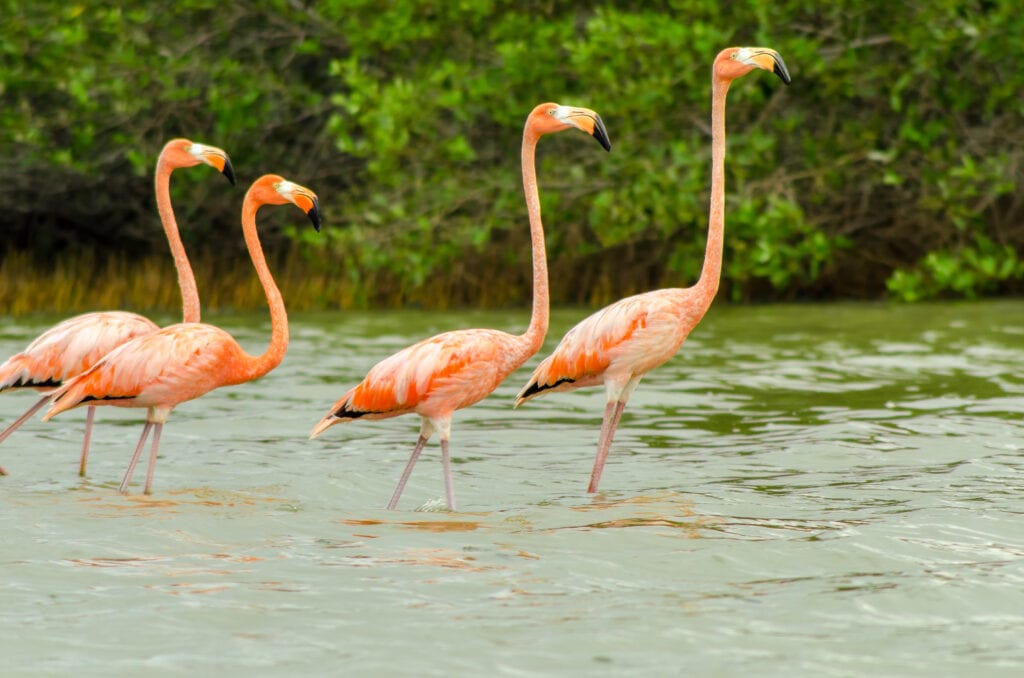Hurricane Idalia struck Florida on August 30th, 2023. I was a powerful storm that was classified as a category four hurricane. As it climbed further north and dumped heavy rain across huge swathes of the East Coast, the violent winds began to weaken until the hurricane was weak enough to be classified as a tropical storm. Before the storm relented, though, it brought some unexpected visitors to several East Coast states.
Related Article: Endangered Secretary Bird Hatches in San Antonio
In the five days since Idalia passed, more than 150 flamingos have been sighted in eight U.S. states in the regions of the Southeast and the East Coast. Wild flamingos in the United States are uncommon, but not unheard of. Flamingos once lived in Florida, though they disappeared in the early 20th century. At one point, a captive population of flamingos escaped into the wild, and subsequent sightings have often been attributed to this population. Some do still believe that a limited population of wild Floridian flamingos persists. If this is true, it is a very small population with scant sightings. Whether they are visitors, descendants of escapees, or native residents, over 95% of sightings are concentrated in the Everglades, Biscayne Bay, and the Florida Keys.
So, flamingo sightings in the states are not unheard of, but they tend to be concentrated in very limited sections of Florida wetlands. What is unheard of are flamingos in Ohio, but thanks to Hurricane Idalia, that’s exactly what happened. On Friday, September 1st, after the worst of the storm was over, Ohio residents were shocked to see several flamingos in the area of Caesar Creek State Park in Waynesville, Ohio.
And they’re not the only ones. Kentucky, Texas, Alabama, North and South Carolina; at least nine states have reported flamingo sightings at the time of writing. Of the more than 150 long-legged birds that have been reported throughout the Southeast, more than 70 have been concentrated in Florida. Unlike in years past, though, these birds have been spotted far outside of their usual wetland haunts.
While this scope and scale of flamingo sightings is unprecedented, the general scenario at play is well-documented. It’s called a “migratory fallout.” When groups of migratory birds encounter difficult conditions, such as a disorienting weather front, they may be blown off course from their original destination, or they may tire before reaching their destination and seek land early. In this case, the powerful winds and torrential rain brought on by Idalia interrupted the flight of one or more flocks of flamingos, scattering them in places that they wouldn’t ordinarily visit.
Popular Article: Beak Shape Helps Predict Nest Material Use in Global Bird Populations

